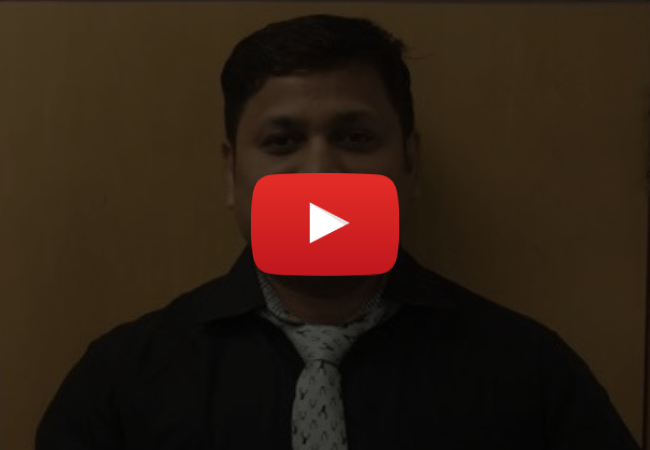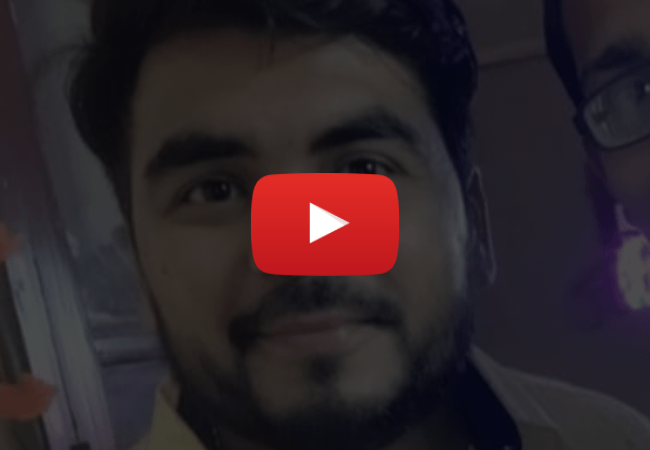202 Jyoti Building, Nehru Place,
Near Eros Corp. Tower,
New Delhi - 110019, India
info@masteringlinux.in
Linux Engineer
This course is a combination of both system & network administration course offered by us. It is designed for students who are looking for complete knowledge of Linux and it's servers. After completion of this course one can manage system admin tasks such as log monitoring, general automation, etc. & also deploy & manage various diffrent servers such as DNS, Proxy, Firewall, Mail, Web, etc.
Download PDF Purchase Course Contact Team Student FeedbackBasic Networking concepts, About proprietary and Open source software, About Linux, Duties of system administrator and Linux engineer. VI editor, Installation of Linux File system
Linux Directory Structure, about root user and normal user, remote connectivity using Putty, Kitty, VNC, RDP
Linux Boot process, Grub boot loader,systemctl domain, targets, Service management,Booting in rescue mode,single user mode, recover root password, setup grub password
Disk Portioning,formatting, Linux filesystem type ( ext2,ext3…), mounting filesystem, /etc/fstab, Journaling attributes, auto and manual mounting, file and disk management tools, the lost+found directory
Linux User Essential, user management, user roles default parameters, Ownership, working with groups, setting user environment, login configuration files, password essential, related security, /etc/nologin, superuser equivalent
Networking service overview, concept of IP,Subnet mask, Gateway and DNS , IP configuration, Multiple IP, range of IP, MAC address, network configuration file locations and format, routing table, Linux as a router, Network manager, Networking tools, Link status and other related commands.
Linux Permissions/ownership concept, traditional and octal method, Setting default permission ( UMASK), Special Permission ( SUID,SGID,Sticky bit), File and folder attributes, ACLs,Soft and Hard Links, Inode concepts.
One time automation (AT), Repetitive automation ( cron and anacron ), various examples, Maintenance scheduling, Backup and restore, Scheduling Security.
Basic Commands, Linux Monitoring Commands, Linux Important Commands, Yum Server
Shell Basics (Types of shells, Shell functionality Environment) Writing first script(Writing script & executing basic script, Debugging script, Making interactive scripts,Variables (default variables), Mathematical expressions) Conditional statements(If-else-elif, Test command,Logical operators-AND,OR,NOT, case –esac,Loops, While,For,Until, Break & continue) Command line arguments(Positional parameters, Set & shift, IFS, Break & continue) Functions & file manipulations (Processing file line by line,Functions) Regular Expression & Filters (What is regular expression, Grep,cut ,sort commands Grep patterns) SED & AWK Processes (Concept of process in Unix, Background processes, Scheduling processes -At, batch & Cron) Misc (rapping signals, String substitutions / manipulations)
NFS Server: using NFS to access remote file system, configuring NFS server, configuring NFS clients, Exporting file system to NFS server to NFS clients. LVM: Physical volume management (pvcreate,pvdisplay,pvchange, pvck), Volume group management (vgcreate, vgchange, vgextend, vgdisplay, vgck, vgscan), Logical volume management (lvcreate, lvchange, lvresize, lvdisplay).
Concept of encrypted communication, Xinetd Service and child processes, Telnet server, Configuring Vsftpd Server, Security option, anonymous uploads, Client and web based access of ftp server, user restrictions, log monitoring and control panel.
Configure ssh server, security options, concept of RSA/DSA keys, password and password less authentications, Server hardening, prevention of login attacks, password less authentication with putty, /etc/nologin, logging and monitoring.
Concept of proxy server, Types of proxy, Proxy Server benefits, content filtering, Access Control List ( ACLs), IP, MAC, Username/Password based access, building control panel to maintain the server, transparent proxy server, Security tips and troubleshooting.
Concept of DHCP Server, Configure DHCP Server for dynamic IP, Fixed IP, MAC Registration Scenario based discussion, Build a control panel.
Understanding of DNS Server fundamentals, understanding DNS parameter (A, AAA, SOA, NS, CNAME, PTR, TXT, MX etc), Configure for FORWADERS, Cache DNS, configure Internal DNS Server, RDNS, Dynamic DNS, Master Slave Server replications, Security options, DNS utilities. Understanding Global DNS Name Resolution techniques, Domain Registration/hosting, Root Servers RDNS, SPF, DKIM, DMARC concepts, Testing tools, Build a control panel to manage DNS stuff.
Concept of Web Server, HTTP and HTTPS, Configure Apache server, Port Redirection, .htaccess Concepts, Multiple Website Hosting (virtual domains / vhosts), SSL Certificate Deployment, Implement Apache Web Login Authentication with password, Building Apache with mod_ssl, Web hosting techniques, Apache Modules, Awstats. Connectivity with database ( MySQL or Mariadb)
About MySQL or MariaDB database server, MySQL commands and queries, Backup and Restore, PhpMyAdmin Panel. MySQL replication master-master and master-slave.
NetBIOS concepts, Samba as a backup server ( samba 3.x), file restrictions, testing tools, integration with windows system, auto mounting, Samba as a active directory (Samba 4.x), Replacement of Windows AD, Group policies, login scripts, Roaming profile, joining windows PCs, RSAT admin panel, Central domain and directory management, Users, Security groups, Distribution lists, Contacts, Multiple Organization Units (OUs), Group Policy Objects (GPOs),Single Sign-On (SSO) authentication, Supported OS: Windows 7/8/10,File sharing in Windows® environments (CIFS),Users and Groups access and modification permissions (ACLs)
Mail Server Basics, About JUNK or SPAM Mails, Concepts of DNS(MX) Mail Exchanger, Understanding Email Routing, Mailing Components like MTA, MDA, MUA, SMPT-AUTH,OPEN-REALY, SMART-HOST, TRANSPORT,FORWARDING, MASQUERADING etc. Understanding Mailing features: Disclaimer, Auto responder, Mail Quota, Types of Email Accounts, Global Address Book, Distribution List etc. Understanding Email Header: Email, Tracing, Message ID, TO, CC, BCC, X Parameters, Spam Score Etc. Understanding Mailbox: MDIR, MBOX Mail Relaying through remote host, SMTP AUTH, transport map, Mail Archiving with individual users, Virtual Table, account aliases / mail forwarding / Integration with antivirus / Anti Spam / LDAP as Global Address Book / SSL / TLS, Certificates, Domain Masquerading, Briefcase feature, Auto responder, mail flter, Backlist & whitelist Address, RDNS,SPF,DKIM,DMARC,RBL,SBL database integration o control SPAM
IPTables, TCP Wrapper, Firewalld, 101 Tips and Tricks for Server Hardening, Open Source Firewall
Get Free Consultation
Word from Linux Experts


























